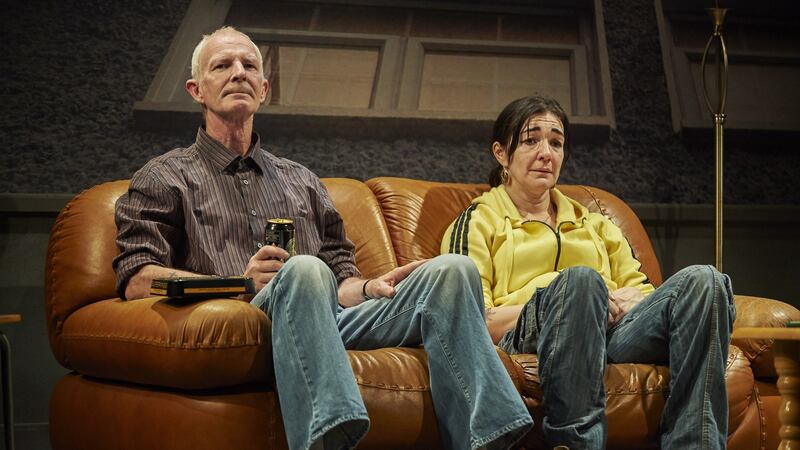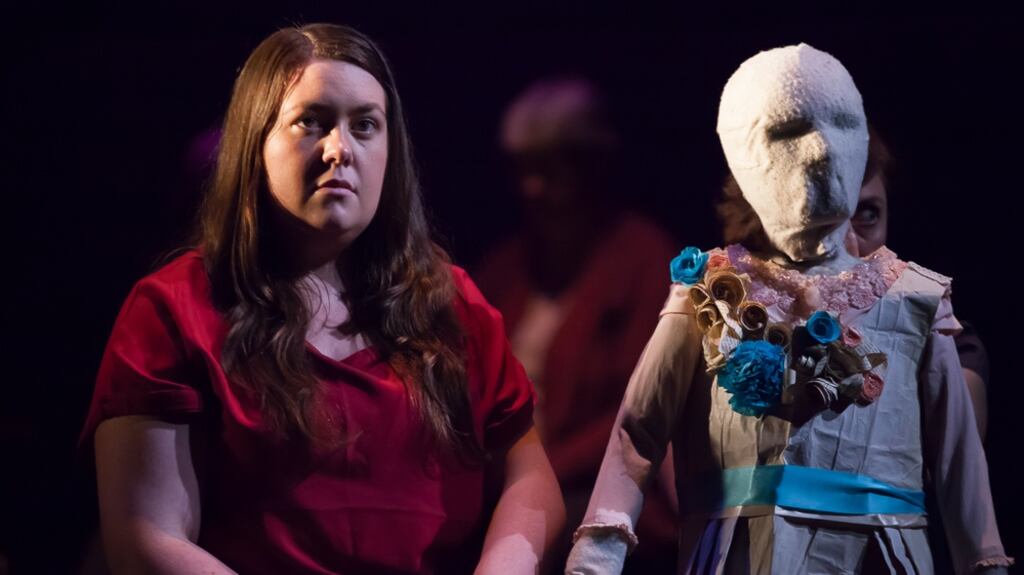At the inaugural meeting of Waking the Feminists at the Abbey Theatre in November last year, community activist Kathleen O’Neill spoke from the stalls about the importance of recognising the diversity of women’s experience.
“Feminism is not homogenous,” she said, in what was one of the most powerful statements of the afternoon. She urged the movement to reach outwards, beyond the four walls of the theatre, to engage with women living on the social margins in the inner city. “They have the same stories,” she said. They rarely, however, have the opportunity to share them in a public forum such as the theatre.
Five months later, downstairs at the Peacock Theatre, a new play by Sean P Summers, Tina's Idea of Fun, offered a slice of the life of one working-class woman, the eponymous anti-heroine, who is a former drug addict trying to reconnect with her son. The play, which offered itself as a realistic presentation of Dublin life, was raucous, funny, profane and moving, but there was something unsettling about the way in which the story was presented: the "fourth wall", so crucial to the stridently naturalistic production, might well have been bars on a cage, the audience looking through them at a human zoo. Also, this play, about a woman, was written by a man.

Tales from Rialto
Natural History of Hope, performed at Project Arts Centre recently, offered a different approach to presenting the stories of women living in Dublin's inner city. The performance was a culmination of a four-year intergenerational project by artist Fiona Whelan, in collaboration with Rialto Youth Project and Brokentalkers Theatre, and was shaped by first-person testimonies about gender inequality. The script was knitted together from hundreds of conversations with women from the Rialto area, recorded during 260 individual interviews and scores of group meetings and workshops.
The stories spoke of young women living in fear of older men, dealing with absent fathers and coming to terms with their sexuality. They spoke of older women trapped by domestic abuse, who wanted a better life for their daughters. Knitting the stories together was the metaphor of hope, personified as a girl growing into a young woman, struggling with all the same issues. In the bleak social context – one young woman called it “the bubble” – it was difficult to see how Hope would survive a life where she was oppressed personally by her gender, but on a broader political level by her class, which gave her no opportunity to change her life circumstances.
The cast, 30 people from Rialto, performed alongside artist Fiona Whelan and Nichola Mooney, manager of the Rialto Youth Project. Whelan, a visual artist working with Rialto Youth Project for 12 years, says the gender lens for the project was initially inspired by a desire "to explore and respond to women's experiences of life, and we quickly realised what united all the stories you hear people tell in Rialto is the theme of power. People are very wary about using the word 'class', but there was a real sense that the social circumstances in particular were important in shaping their experiences as women. The stories were about being marginalised, oppressed, but by telling their stories we built a sort of collective power."
Mere storytelling, however, wasn’t enough to enact the sort of dialogue the collaborators were interested in. The idea for a theatrical presentation came from the women in the project. As Mooney says, “basically, they wanted to do a play”.
Academia meets real life
Brokentalkers, which has long worked with oral testimony and community casts, came on board to help them sculpt a performance piece from the diverse material, which included the input of psychologist Dr Martina Carroll and sociologist Professor Kathleen Lynch. For Audrey Wade, one of the local women involved in the project, being confronted with the academic language of social analysis for the first time was bracing: "The first time I heard it, I was, like, 'What? That's my life.' "
The performance made use of this discomfort by having the performers read out various sociological analyses of their lives and situations, and the contrast between the academic language and the personal testimony was jarring.
As Whelan elaborates, “a lot of the language around class and gender doesn’t resonate with a community like Rialto, but doing a play can be really useful because certain ideas – like Hope or the Wolf or the bubble, which came from the stories of the women – became good metaphors that we could use in the performance to engage with these issues.”
Wade, for example, says the show helped her broach difficult issues with her daughter in a very direct way. Her 14-year-old daughter also performed in the play, but originally Wade didn’t want her to be involved.
“I just thought it was a bit too much, the stories,” she says. “I like to shelter her a bit from all that. But then I thought it was actually a good way of having conversations about things, because she’s at that age where she is getting aware of boys and some of the metaphors about the wolf and the shadow would be a way of talking about that with her.”
Although she was initially worried “people wouldn’t get what we were talking about because the play was done in such an edgy way”, Wade says she is regularly stopped by people from her community to talk about the show, and Mooney says its metaphors have entered the idiom of those from the community who saw the play. “People are going around talking about the bubble – being trapped in the bubble – where before they wouldn’t have been able to put words on that feeling.”
Much, but not all, of the audience that attended the three-night run at Project came from the local community. However, it was vital for all involved that the production be in a professional theatre. Mooney says it “shows we take the stories and the work involved in staging them seriously, but it is also a way of highlighting the issues rather than keeping them local. And there’s another layer: it speaks to power, saying, ‘These stories deserve to be heard.’ ”
Despite the “excitement, the emotional rollercoaster” of performance, as Wade describes it, the performance was “not the end product”, according to Whelan. In the weeks since the performance they have actively sought responses from within and without the community, not just to see how they can improve it for future performances but so that they can better understand how the stories themselves might “serve some use in the community”.
One of Whelan’s previous collaborations with the community, Policing Dialogues, which revolved around young people’s attitudes to the police, provided material for a training programme within the Garda, and they believe Natural History of Hope can have similar practical use, perhaps within the education system.
The project started with women sharing their experiences, but it hopes to inspire them to continue empowering each other with their stories.











